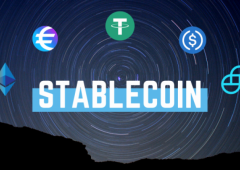NYC Sets Stage for Crypto Future as Mayor Adams Favours Blockchain Innovation
13.05.2025 21:00 1 min. read Alexander Stefanov
With New York’s first crypto summit just days away, Mayor Eric Adams is making it clear: the city is positioning itself as a global epicenter for blockchain development.
At a press briefing held at Gracie Mansion, Adams emphasized that New York’s approach to digital assets is rooted in long-term vision, not viral hype. He noted the transformational potential of blockchain in solving real-world problems—especially for marginalized communities locked out of traditional banking systems.
“We’re building something lasting,” Adams said, pointing to blockchain’s capacity to expand financial inclusion in a city where too many residents still lack access to basic financial services.
Chief Technology Officer Matt Fraser joined Adams at the briefing and highlighted how blockchain could also enhance city infrastructure by making critical services like access to public records more secure and equitable.
The upcoming summit on May 20 is expected to bring together entrepreneurs, policy leaders, and developers, aiming to shape a strategic roadmap for New York’s emerging crypto sector. Adams described it as an opportunity to cultivate collaboration and turn the city into a launchpad for the next wave of fintech innovation.
Renewing his call for blockchain businesses to make New York their home, Adams said, “This city is open to bold ideas. If you’re building in Web3, we want you here.”
-
1
UK Regulators Unveil PISCES – A New Era for Private Share Trading
11.06.2025 15:00 2 min. read -
2
Trump Turns 79 With Billions in Crypto and a $45M Parade
14.06.2025 22:00 2 min. read -
3
Polygon Breaks from Decentralization as Sandeep Nailwal Assumes Full Control
11.06.2025 20:00 2 min. read -
4
KuCoin Plants Its Flag in Bangkok With a Licensed Thai Exchange
14.06.2025 13:00 1 min. read -
5
Nvidia CEO Urges UK to Invest in AI Infrastructure or Risk Falling Behind
10.06.2025 9:00 1 min. read
U.S. Bank Advises Clients to Drop These Cryptocurrencies
Anchorage Digital, a federally chartered crypto custody bank, is urging its institutional clients to move away from major stablecoins like USDC, Agora USD (AUSD), and Usual USD (USD0), recommending instead a shift to the Global Dollar (USDG) — a stablecoin issued by Paxos and backed by a consortium that includes Anchorage itself.
Vitalik Buterin Warns Digital ID Projects Could End Pseudonymity
Ethereum co-founder Vitalik Buterin has voiced concerns over the rise of zero-knowledge (ZK) digital identity projects, specifically warning that systems like World — formerly Worldcoin and backed by OpenAI’s Sam Altman — could undermine pseudonymity in the digital world.
What Are the Key Trends in European Consumer Payments for 2024?
A new report by the European Central Bank (ECB) reveals that digital payment methods continue to gain ground across the euro area, though cash remains a vital part of the consumer payment landscape — particularly for small-value transactions and person-to-person (P2P) payments.
History Shows War Panic Selling Hurts Crypto Traders
Geopolitical conflict rattles markets, but history shows panic selling crypto in response is usually the wrong move.
-
1
UK Regulators Unveil PISCES – A New Era for Private Share Trading
11.06.2025 15:00 2 min. read -
2
Trump Turns 79 With Billions in Crypto and a $45M Parade
14.06.2025 22:00 2 min. read -
3
Polygon Breaks from Decentralization as Sandeep Nailwal Assumes Full Control
11.06.2025 20:00 2 min. read -
4
KuCoin Plants Its Flag in Bangkok With a Licensed Thai Exchange
14.06.2025 13:00 1 min. read -
5
Nvidia CEO Urges UK to Invest in AI Infrastructure or Risk Falling Behind
10.06.2025 9:00 1 min. read


